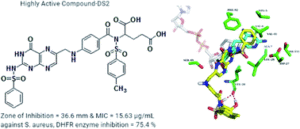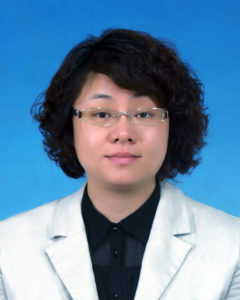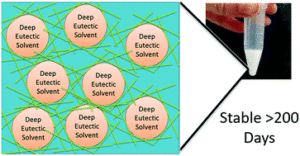Looking back at 2020, we would like to share with you some of the great research that has been published in RSC Advances over the year. We are proud to present a selection of the most popular 2020 catalysis papers, reviews and HOT articles published so far.
We hope you enjoy reading these articles and as always, all our articles are open access – free to read and accessible to everyone.
| 2020 HOT articles |
Over the year, our reviewers and Associate Editors have handpicked articles of particular interest and marked them as HOT. We are very pleased to highlight some outstanding 2020 HOT articles on catalysis:
Xiao-Xiao Jiang, Jian-Ping Lang et al., DOI: 10.1039/D0RA00845A
 Jian-Ping Lang, Soochow University, and colleagues have introduced a facile method for the synthesis and modification of ultrathin NiFe-layered double hydroxides (LDHs). The LDH nanosheets are highly efficient electrocatalysts in the oxygen evolution reaction.
Jian-Ping Lang, Soochow University, and colleagues have introduced a facile method for the synthesis and modification of ultrathin NiFe-layered double hydroxides (LDHs). The LDH nanosheets are highly efficient electrocatalysts in the oxygen evolution reaction.
‘We have acquired a simple and promising method for synthesizing ultrathin LDHs nanosheets. In particular, we are very excited about the universality of the synthesis of different two-dimensional materials that are widely used in the field of energy storage and conversion,’ says Lang.
Read the interview with Jian-Ping Lang about his article here.
More HOT articles
Nanocellulose enriches enantiomers in asymmetric aldol reactions
Naliharifetra Jessica Ranaivoarimanana, Takuya Kitaoka et al., DOI: 10.1039/D0RA07412H
NaBH4 induces a high ratio of Ni3+/Ni2+ boosting OER activity of the NiFe LDH electrocatalyst
Yaqiong Wang, Shihe Yang et al., DOI: 10.1039/D0RA06617F
Understanding the mechanism of the competitive adsorption in 8-methylquinoline hydrogenation over a Ru catalyst
Yuan Dong, Hansong Cheng et al., DOI: 10.1039/D0RA01277G
Read the full HOT article collection
| Most popular 2020 articles |
Reviews
Catalytic conversion of ethane to valuable products through non-oxidative dehydrogenation and dehydroaromatization
Hikaru Saito and Yasushi Sekine, DOI: 10.1039/D0RA03365K
Cu2O as an emerging semiconductor in photocatalytic and photoelectrocatalytic treatment of water contaminated with organic substances: a review
Babatunde A. Koiki and Omotayo A. Arotiba, DOI: 10.1039/D0RA06858F
Recent advancements in g-C3N4-based photocatalysts for photocatalytic CO2 reduction: a mini review
Runlu Liu, Shenmin Zhu et al., DOI: 10.1039/D0RA05779G
Papers
One-pot multicomponent synthesis of thieno[2,3-b]indoles catalyzed by a magnetic nanoparticle-supported [Urea]4[ZnCl2] deep eutectic solvent
The Thai Nguyen and Phuong Hoang Tran, DOI: 10.1039/D0RA00773K
Green synthesis of CuO nanoparticles using Lantana camara flower extract and their potential catalytic activity towards the aza-Michael reaction
Rakesh Chowdhury, Md. Harunar Rashid et al., DOI: 10.1039/D0RA01479F
Comparison of electrocatalytic activity of Pt1−xPdx/C catalysts for ethanol electro-oxidation in acidic and alkaline media
Qiang Zhang, Fengxing Jiang et al., DOI: 10.1039/D0RA00483A
CO2 photoreduction to CO/CH4 over Bi2W0.5Mo0.5O6 solid solution nanotubes under visible light
Yang Wang, Mingyi Zhang et al., DOI: 10.1039/D0RA00672F
Production of green diesel from catalytic deoxygenation of chicken fat oil over a series binary metal oxide-supported MWCNTs
N. Aliana-Nasharuddin, Y. H. Taufiq-Yap et al. DOI: 10.1039/C9RA08409F
Sulfamic acid incorporated HKUST-1: a highly active catalyst and efficient adsorbent
Mahmoud M. Kaid, Amr Awad Ibrahim et al., DOI: 10.1039/D0RA01063D
Photocatalytic hydrogen evolution by co-catalyst-free TiO2/C bulk heterostructures synthesized under mild conditions
Claudio Imparato, Antonio Aronne et al., DOI: 10.1039/D0RA01322F
One-pot synthesis at room temperature of epoxides and linalool derivative pyrans in monolacunary Na7PW11O39-catalyzed oxidation reactions by hydrogen peroxide
Castelo B. Vilanculo, Jesus Avendano Villarreal et al., DOI: 10.1039/D0RA00047G
Three-dimensional NiCoP hollow spheres: an efficient electrode material for hydrogen evolution reaction and supercapacitor applications
Jiban K. Das, J. N. Behera et al., DOI: 10.1039/D0RA00047G
Modification of fibrous membrane for organic and pathogenic contaminants removal: from design to application
Mohammad Neaz Morshed, Vincent Nierstrasz et al., DOI: 10.1039/D0RA01362E
Elucidating the ionic liquid distribution in monolithic SILP hydroformylation catalysts by magnetic resonance imaging
Jakob Maximilian Marinkovic, Anders Riisager et al., DOI: 10.1039/C9RA09515B
Characterization of biocompatible pig skin collagen and application of collagen-based films for enzyme immobilization
Li He, Yaowen Liu et al., DOI: 10.1039/C9RA10794K
Synergistic effect of Ni–Ag–rutile TiO2 ternary nanocomposite for efficient visible-light-driven photocatalytic activity
Petri M. Leukkunen, Marko Huttula et al., DOI: 10.1039/D0RA07078E
Proline derived guanidine catalysts forge extensive H-bonded architectures: a solution and solid state study
Zahraa S. Al-Taie, Jack A. Wilson et al., DOI: 10.1039/C9RA07508A
Enzyme immobilization inside the porous wood structure: a natural scaffold for continuous-flow biocatalysis
Christian Goldhahn, Munish Chanana et al., DOI: 10.1039/C9RA10633B
 Submit to RSC Advances today! Check out our author guidelines for information on our article types or find out more about the advantages of publishing in a Royal Society of Chemistry journal.
Submit to RSC Advances today! Check out our author guidelines for information on our article types or find out more about the advantages of publishing in a Royal Society of Chemistry journal.
Keep up to date with our latest HOT articles, Reviews, Collections & more by following us on Twitter. You can also keep informed by signing up to our E-Alerts.





























